Many people think that flashlights are not easy to use. They are not bright enough, or they run out of power after a while, or they fail to work at a critical moment. They may think that it is a problem with the flashlight itself, but in many cases, the real reason is that they have chosen the wrong battery. AA alkaline, AA NiMH, AA LiFePO4, 14500 lithium battery, although they are all AA size, are completely different. Using the wrong battery may damage the light or even be dangerous. In this article, we will clearly tell you the advantages and disadvantages of various batteries (alkaline, NiMH, disposable lithium battery, rechargeable lithium battery) and what scenarios they are suitable for.
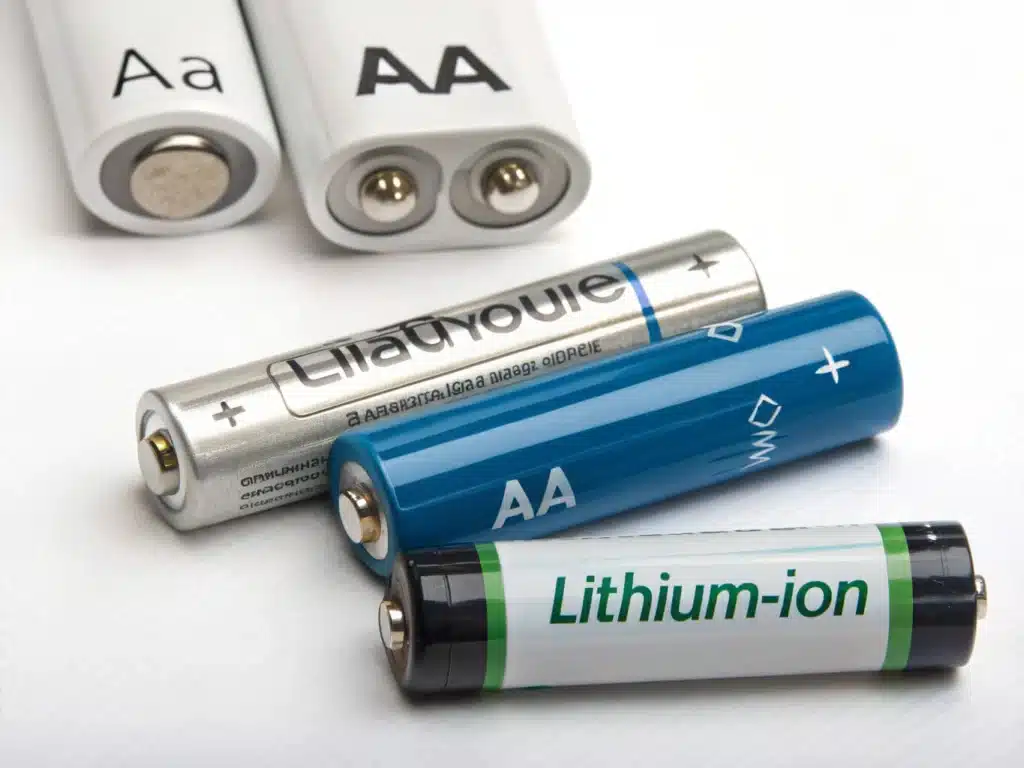
Table of Contents
ToggleFlashlight and batteries basics
To really master the selection of flashlight powered batteries, you first need to understand the following key terms. We will explain them in the simplest way so that you will no longer be confused by those numbers and letters.
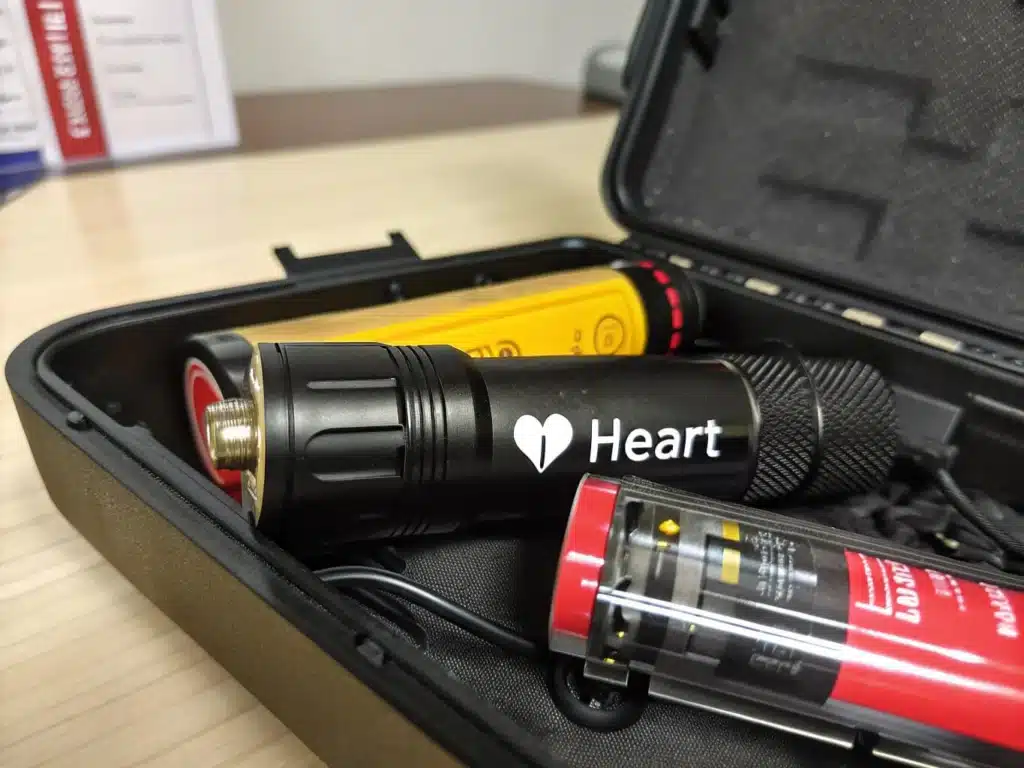
Voltage: Think of it like the water pressure in a pipe. Voltage determines the force of the current, which directly affects the brightness of the flashlight. You need to make sure the voltage matches your flashlight. Using the wrong voltage can cause the flashlight to not light up or be insufficiently bright, or even burn out the lamp or circuit. Please be sure to check the flashlight manual or the battery compartment label. The unit is volts (V).
Capacity: Like the size of a car’s gas tank, it determines how much power it can store, which directly affects the battery life of the flashlight. Capacity is usually indicated in milliampere hours (mAh) or ampere hours (Ah) (1Ah = 1000mAh). The larger the capacity, the longer the battery life under the same conditions. The actual battery life will be affected by many factors such as brightness level and temperature.
Energy: This is a more comprehensive metric that combines voltage and capacity (Energy Wh = Voltage V × Capacity Ah). Watt-hours (Wh) represent how much energy the battery can output in total. When you compare batteries of different voltages, Wh is a fair and meaningful measure.
Chemistry: This is the root cause of differences in battery performance. Different chemicals (such as Alkaline, NiMH, Li-ion, LiFePO4, Li-FeS2, etc.) determine the battery’s voltage, capacity, energy density, self-discharge rate, cycle life, and discharge capacity. We will introduce the advantages and disadvantages of mainstream chemical compositions in detail later.
Size: This is the most intuitive parameter. Common ones include AA, AAA, CR123A, 18650, 21700, etc. When choosing a battery, the physical size is the first prerequisite. You must ensure that the battery can be properly installed in your flashlight.
Discharge Rate (C-Rate): How fast a battery can safely release energy. Some high-performance flashlights require instantaneous high current to achieve extremely high brightness (such as “strobe” or “brightest” mode), which requires the battery to have a sufficiently large discharge rate, such as 5C and 10C. If the battery discharge rate is not enough, it may not be able to drive the flashlight to maximum brightness.
Protection Circuit (Protected vs. Unprotected): Many cylindrical lithium-ion batteries are available with or without protection circuits. A protection circuit is a small circuit, usually located at the negative terminal of the battery, that protects against overcharging, over-discharging, overcurrent (short circuit), and overheating. We recommend using batteries with protection circuits because they improve safety.
Flashlight battery types explained
We divide them into two categories: disposable batteries and rechargeable batteries, and analyze their respective advantages and disadvantages and the most suitable usage scenarios in detail.
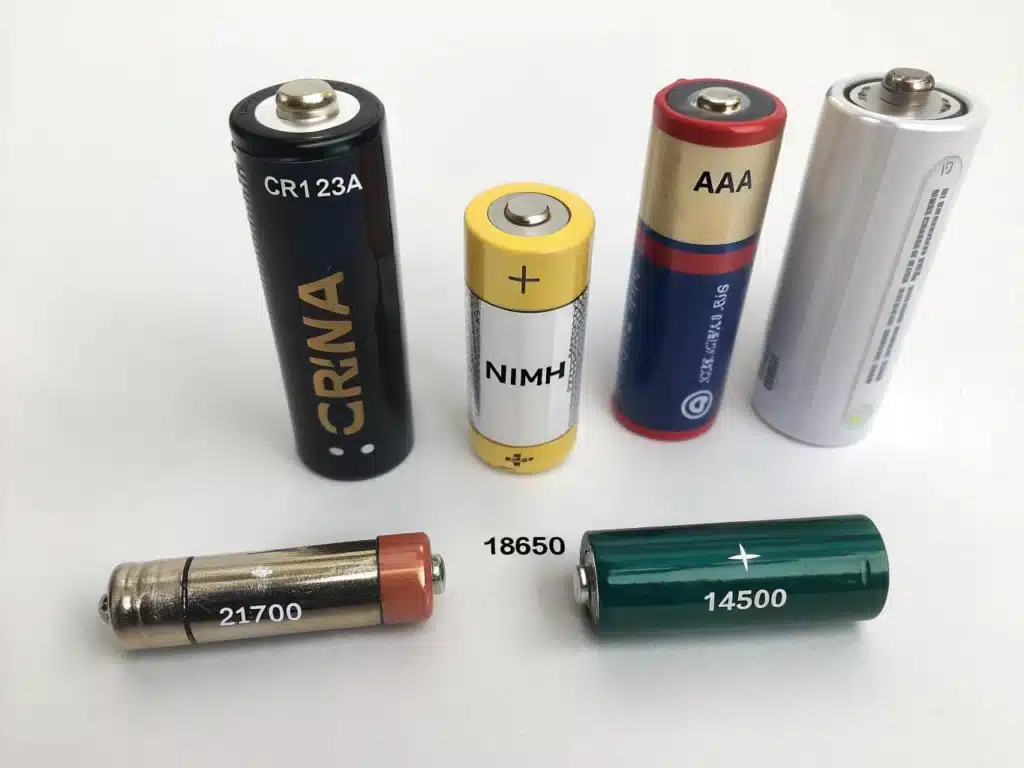
| Disposable batteries | ||
|---|---|---|
| Alkaline batteries | AA, AAA, CR123A | |
| Advantages | Cheap, the purchase cost is very low. Easy to obtain: supermarkets and convenience stores are everywhere. | It has higher energy density and lighter weight than alkaline batteries, can maintain good performance even in sub-zero temperatures, and has more stable voltage at high power output. |
| Disadvantages | It is easy to leak liquid. If it is not stored properly or is exhausted, it is very easy to leak liquid, which may damage the flashlight. The voltage drops rapidly under high power. In the bright light mode that requires high current, the voltage will drop rapidly, resulting in reduced brightness and shortened battery life. It is not environmentally friendly. | Higher price: The purchase cost is much higher than alkaline batteries. Not rechargeable. |
| Suitable for | Low power flashlight and emergency backup. | Emergency kit, cold environment operations, lightweight outdoor activities such as mountaineering, hiking and tactical flashlight. |
| Rechargeable battery | ||
| NiMH – AA, AAA | Li-ion – 18650, 21700, 14500, 16340, 26650 | |
| Advantages | Rechargeable up to 500 times; cost-effective, long-term use, the cost is much lower than continuing to buy disposable batteries. No memory effect, and not prone to thermal runaway. | High energy density and nominal voltage (3.7V) support high discharge rate, meet the needs of instantaneous extreme brightness or flash, and have low self-discharge. |
| Disadvantages | The energy density is lower than that of lithium-ion, and the nominal voltage is only 1.2V, which is lower than alkaline batteries (1.5V) and lithium-ion batteries (3.7V). | A dedicated charger is required, and NiMH or other chargers cannot be used. Safety requirements are high, and they are afraid of overcharging, over-discharging, short circuit, high temperature, and physical damage. The cost is relatively high. |
| Suitable for | Everyday household flashlight and replace the original alkaline batteries. | High performance flashlight, EDC (Everyday Carry) flashlight, commonly used for outdoor adventures and search and rescue. |
A guide to common flashlight battery sizes
In addition to the above flashlight types, let’s take a look at their sizes and specifications. This is the most intuitive and the most error-free part. If the size is wrong, the battery will not fit into the flashlight at all. Batteries of different sizes often have different available chemical types and performance ranges. The following are the most common battery sizes in flashlights:
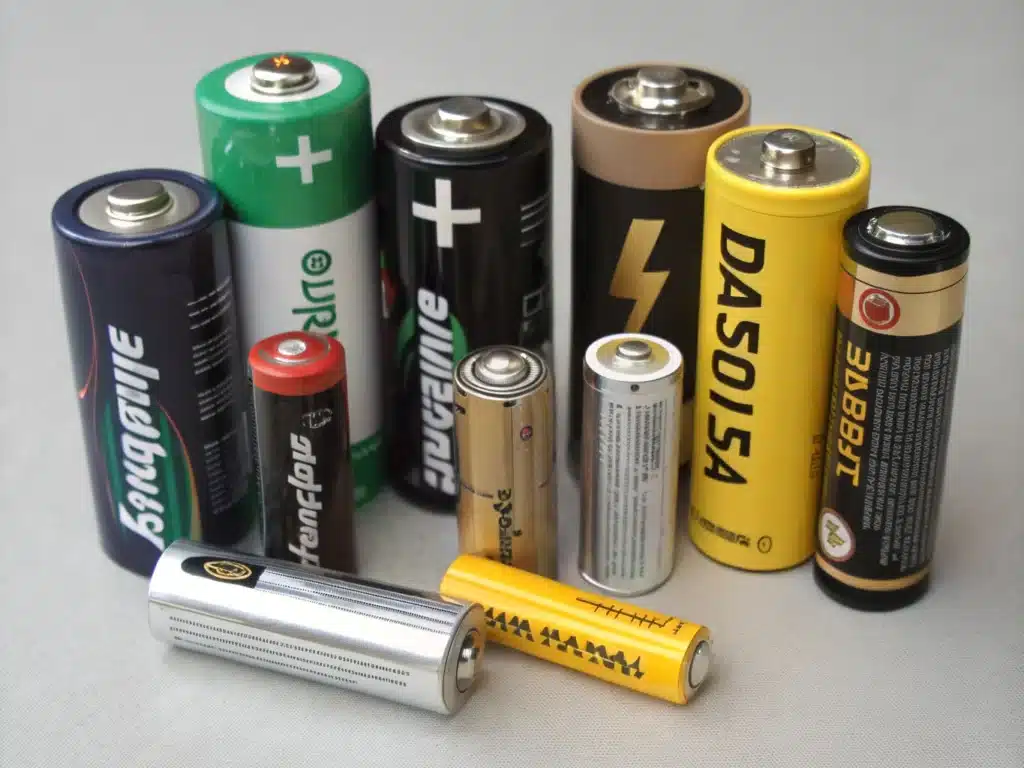
AA / AAA (No. 5 / No. 7):
Extremely common: This is the most familiar battery size in our daily lives, used in a wide range of small electronic devices, including many entry-level and portable flashlights.
There are various chemistry types: they can be Alkaline (1.5V), NiMH (1.2V) or Lithium Primary (1.5V).
There are lithium-ion rechargeable batteries similar to the AA/AAA size, namely 14500 (AA size) and 10440 (AAA size). However, their voltage is 3.7V, which is much higher than 1.2V-1.5V! Unless the flashlight is specifically compatible with 14500 or 10440 lithium-ion batteries, it is strictly prohibited to use them.
Compact: These squat cylindrical batteries are commonly found in small, high-power tactical flashlights or speedlights.
3V disposable lithium battery: The voltage is 3V, with good power output and low temperature performance.
Sometimes, the 3.7V 16340 and RCR123A replace the CR123A. Similarly, you also need to make sure that the flashlight is compatible with the 3.7V voltage.
This is the most popular high-performance rechargeable lithium-ion battery size (18mm diameter, 65mm length). It strikes a good balance between energy density, capacity, discharge capability and cost.
Used in high-end flashlights, laptop battery packs, power tools, etc.
Various Models: There are various 18650 batteries with different capacities (1800mAh, 2000mAh, 2200mAh, 2500mAh, 2600mAh, 3000mAh, etc.) and discharge rates (1C, 3C, 5C, etc.) to choose from to meet the needs of different flashlights.
Emerging trend: Slightly larger than 18650 batteries (21mm in diameter, 70mm in length).
Higher capacity/discharge: Due to its larger size, the 21700 battery has a capacity of 4000mAh and 5000mAh and supports 5C rate discharge.
Many new high performance flashlights are turning to 21700 batteries for ultimate performance.
Large capacity: Thicker than 18650 and 21700 (26mm in diameter, 65mm in length), with a capacity of 5000mAh and 6000mAh.
Commonly used in large flashlights with extra-long battery life, diving flashlights or some multi-lamp heads.
How to choose the best operated battery for your flashlight
Choosing a flashlight battery isn’t simply a matter of which is best, but which is best for you. Follow these steps and you’ll make an informed decision:
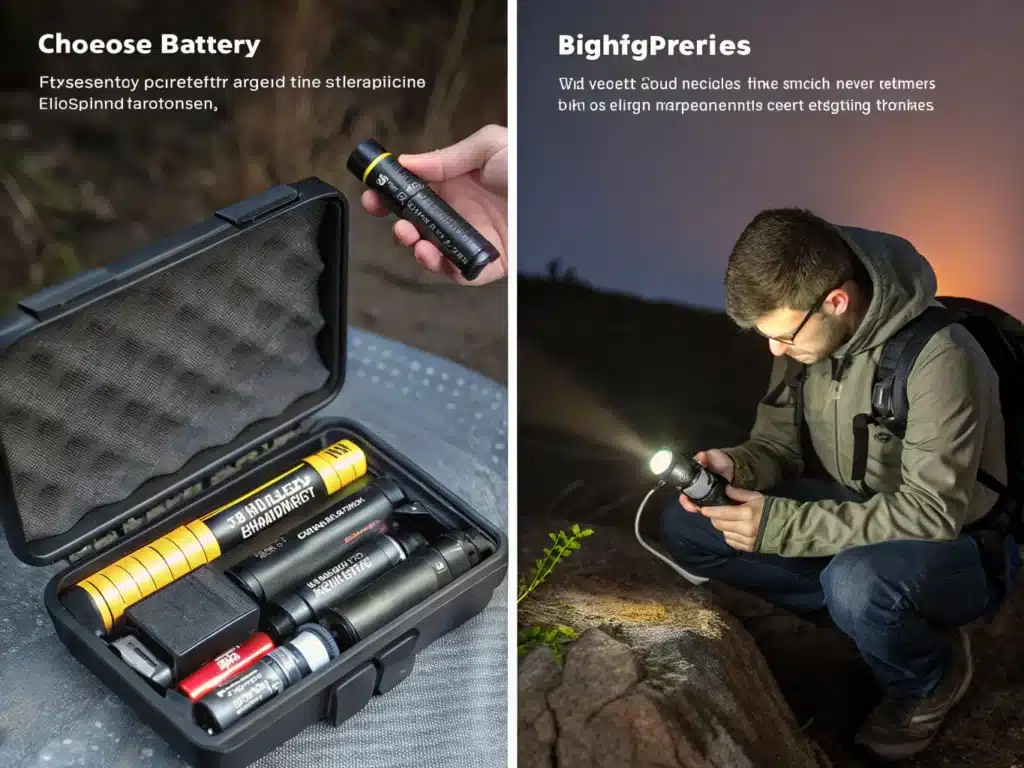
Confirm the flashlight specifications
Before you consider any battery, be sure to read your flashlight’s manual carefully, or check the markings on the flashlight itself. If you are developing a flashlight, confirm the battery specifications with the engineer. Confirm the battery size (AA, AAA, 18650, 21700, CR123A, or other) and voltage (1.2V, 1.5V, or 3.7V).
Evaluate usage scenarios
Narrow your choices based on your own needs, evaluating frequency of use, brightness/power requirements, battery life, ambient temperature, weight, and budget.
The final trade-off
You can determine the best battery type based on the type and size of your flashlight, as well as the pros and cons of each. For example, if your flashlight is a compact EDC (Everyday Carry) type, 14500 and 16340 batteries are the best choices. You can visit our Flashlight Batteries for more information.
Lithium-ion battery usage, charging and storage instructions
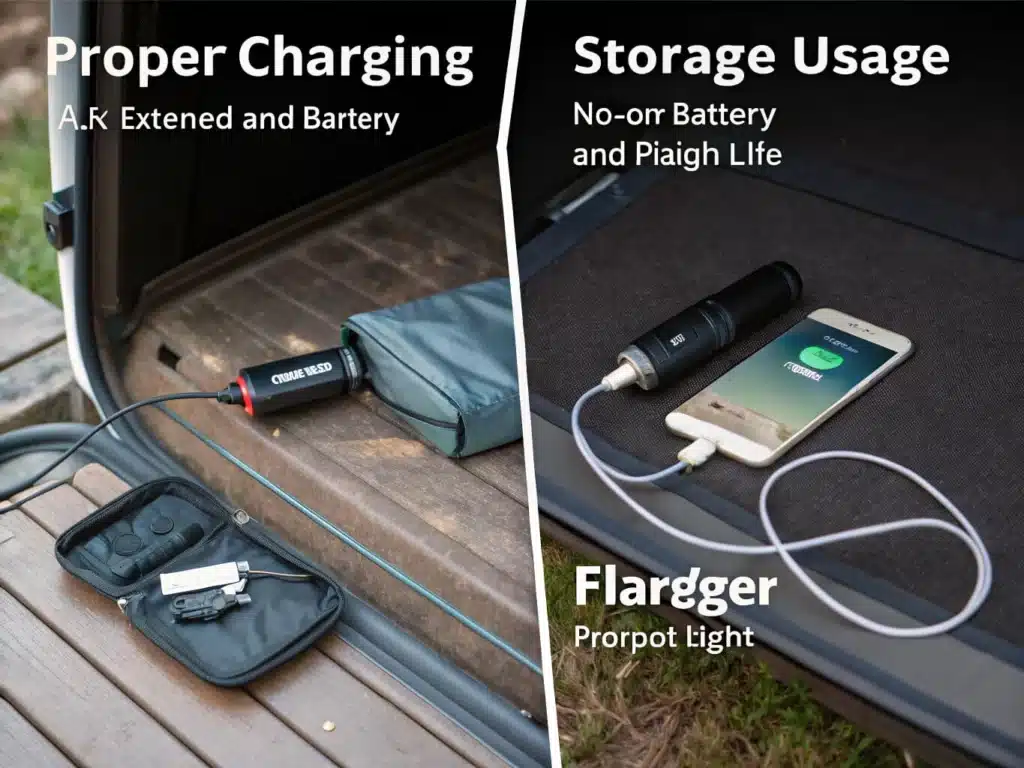
Lithium-ion batteries store a lot of energy in a limited volume. This is what makes them so powerful, but it also means that if they malfunction or are misused, the energy released could be dangerous.
Always buy genuine batteries from reputable brands. Avoid inferior products with unknown origin, abnormally low prices, and no brand logos or safety certifications. These products often cut corners, lack necessary safety protections, and are the main cause of accidents. Hongyitai is a professional lithium battery production factory, you can contact us to get high-quality batteries.
Many lithium-ion batteries have a small circuit board built into them to protect them from overcharging, over-discharging, and short circuits. It provides an important layer of safety.
You must use a smart charger designed for lithium-ion batteries and compatible with your battery model. Never use an incompatible or low-quality charger. Avoid unattended charging and try not to charge overnight.
When storing lithium-ion batteries for a long time, it is not advisable to fully charge or completely discharge them. It is usually recommended to keep the power level at around 40% – 60%, and it is best to store them in a dedicated insulated battery box.
Flashlight battery charger selection and use
Choosing the right battery for your flashlight is like putting the right gas in your car. But choosing and using the right charger is just as important to ensure that your battery performs consistently and safely.
Do not mix chargers
Nickel Metal Hydride (NiMH) and Lithium Ion (Li-ion) batteries require their own dedicated chargers. Some chargers claim to charge multiple chemistries. When choosing such a charger, make sure it has reliable automatic identification and provides the correct charging mode.
We recommend smart chargers, which have a built-in microprocessor that monitors the charging process and has a variety of practical and safety features. They are the best partner for modern rechargeable batteries.
The larger the charging current, the shorter the time it takes to fully charge the battery. However, excessive charging current will increase battery heat and may accelerate battery aging. A moderate charging speed is more beneficial to the long-term health of the battery.
Common mistakes and how to avoid them
Avoiding these pitfalls can save you money, worry, and most importantly, ensure safety and get the best performance from your flashlight and batteries.
- Mixing batteries. Batteries have differences in voltage, capacity, and internal resistance. Batteries with poor performance or low power will drag down overall performance. Always use batteries of the same brand and model.
- Incompatible Li-Ion Substitution. Do not attempt to replace a 1.5V battery with a 3.7V Li-Ion battery unless the flashlight’s manual specifically states that it is compatible with this battery.
- Use of damaged batteries. If you find that the physical structure and chemical stability of the battery have been destroyed, immediately stop using any battery that appears abnormal or damaged.
- Buy cheap batteries from unknown sources. These batteries often use inferior materials and lack necessary protection circuits, posing safety risks. It is recommended to purchase genuine batteries from reputable brands through formal channels.
- Ignore the flashlight manual. Always read the manual of any new flashlight carefully before using it.
Conclusion
With a comprehensive guide to flashlight battery types, sizes, specifications, charging, storage, etc., you can make wise choices to make your flashlight brighter, longer lasting and safer.
